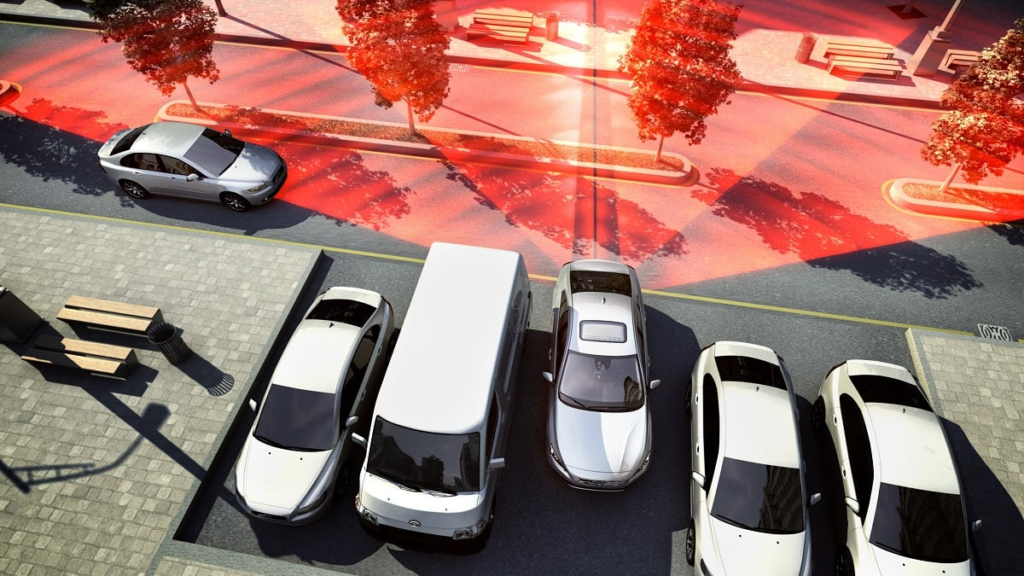
Navigating parking lots and driveways presents a unique set of challenges, particularly when reversing out of tight spaces. Limited visibility and the constant movement of other vehicles can make this maneuver risky. Rear Cross-Traffic Alert (RCTA) is an advanced safety feature designed to address these challenges by providing drivers with critical information about approaching vehicles from the sides. This technology enhances situational awareness and helps prevent collisions while reversing. Here’s a detailed look at how Rear Cross-Traffic Alert works, its benefits, and its limitations.

1. How Rear Cross-Traffic Alert Works
Rear Cross-Traffic Alert systems use a combination of sensors and radar technology to monitor the area around the rear of the vehicle. Here’s a breakdown of the system’s operation:
- Radar Sensors: RCTA systems are equipped with radar sensors, typically installed in the rear bumper of the vehicle. These sensors detect the presence of approaching vehicles from the sides, particularly in areas where the driver’s view is obstructed by the vehicle’s body or other objects.
- Camera Integration: Many RCTA systems are integrated with rear-facing cameras that provide a visual display of the area behind the vehicle. This integration allows the system to offer both visual and audible alerts, enhancing overall awareness.
- Alert Mechanisms: When the system detects approaching cross traffic, it activates a series of alerts to warn the driver. These alerts may include visual signals on the rearview camera display, audible alarms, and sometimes haptic feedback, such as seat vibrations or steering wheel pulses. The goal is to capture the driver’s attention and prompt them to check for oncoming traffic before proceeding.
- Real-Time Monitoring: RCTA continuously monitors the area behind the vehicle while reversing, providing real-time feedback and alerts. This constant vigilance helps drivers make informed decisions and avoid potential collisions.
2. Benefits of Rear Cross-Traffic Alert
Rear Cross-Traffic Alert offers several significant benefits that enhance safety and ease of maneuvering:
- Enhanced Safety: The primary benefit of RCTA is its ability to improve safety by alerting drivers to approaching vehicles from the sides. This is particularly valuable in parking lots or driveways where visibility may be compromised by other parked vehicles or obstacles.
- Increased Confidence: RCTA boosts driver confidence when reversing out of tight spaces. By providing timely alerts, the system helps drivers navigate complex parking situations with greater assurance, reducing the risk of collisions.
- Reduced Risk of Accidents: By warning drivers of cross traffic, RCTA helps prevent accidents caused by unexpected vehicles entering the path of the reversing vehicle. This feature is especially useful in busy or crowded parking areas where the risk of side-impact collisions is higher.
- Convenience in Tight Spaces: In tight parking spaces or areas with limited maneuvering room, RCTA provides valuable support by alerting drivers to potential hazards. This convenience enhances the overall parking experience and helps drivers navigate confined spaces more effectively.
3. Limitations of Rear Cross-Traffic Alert
While RCTA provides valuable safety benefits, it also has limitations that drivers should be aware of:

- Sensor Limitations: The effectiveness of RCTA systems can be influenced by factors such as sensor placement, weather conditions, and the presence of obstacles. For example, heavy rain, snow, or dirt on sensors can impact their performance and accuracy.
- False Alerts: RCTA systems may occasionally produce false alerts due to the detection of stationary objects or other non-threatening items. While these alerts are generally harmless, they can be distracting and may lead to confusion.
- Limited Detection Range: The range of detection for RCTA systems is typically limited to a certain distance. Vehicles approaching from beyond this range may not be detected, so drivers should remain cautious and aware of their surroundings.
- Dependence on Technology: There is a risk that drivers may become overly reliant on RCTA and neglect to check for approaching traffic manually. It’s important to use the system as a supplementary tool rather than a replacement for active observation.
4. Best Practices for Using Rear Cross-Traffic Alert
To maximize the benefits of Rear Cross-Traffic Alert and ensure its effective operation, consider the following best practices:
- Understand Your System: Familiarize yourself with the features and functionality of your vehicle’s RCTA system by consulting the owner’s manual. Knowing how the system operates and what to expect will help you use it effectively.
- Check for Obstructions: Even with RCTA, always manually check for obstructions and approaching traffic before reversing. Use the system’s alerts as a supplementary tool and continue to practice safe driving habits.
- Maintain Sensor Cleanliness: Keep the sensors and cameras of your RCTA system clean and free from debris. Regularly check for dirt, snow, or other obstructions that could impact sensor performance.
- Be Prepared for System Limitations: Recognize that RCTA systems have limitations and may not detect all potential hazards. Stay vigilant and use your own judgment when reversing, particularly in complex or high-traffic environments.
5. Conclusion
Rear Cross-Traffic Alert is a valuable technology designed to enhance safety and convenience when reversing out of parking spaces. By providing timely alerts about approaching vehicles from the sides, RCTA helps prevent collisions and improves overall maneuverability. Understanding how RCTA works, its benefits, and its limitations allows drivers to make the most of this technology while maintaining cautious and attentive driving practices. As automotive technology continues to advance, Rear Cross-Traffic Alert remains a key component in ensuring safer and more efficient driving experiences.




